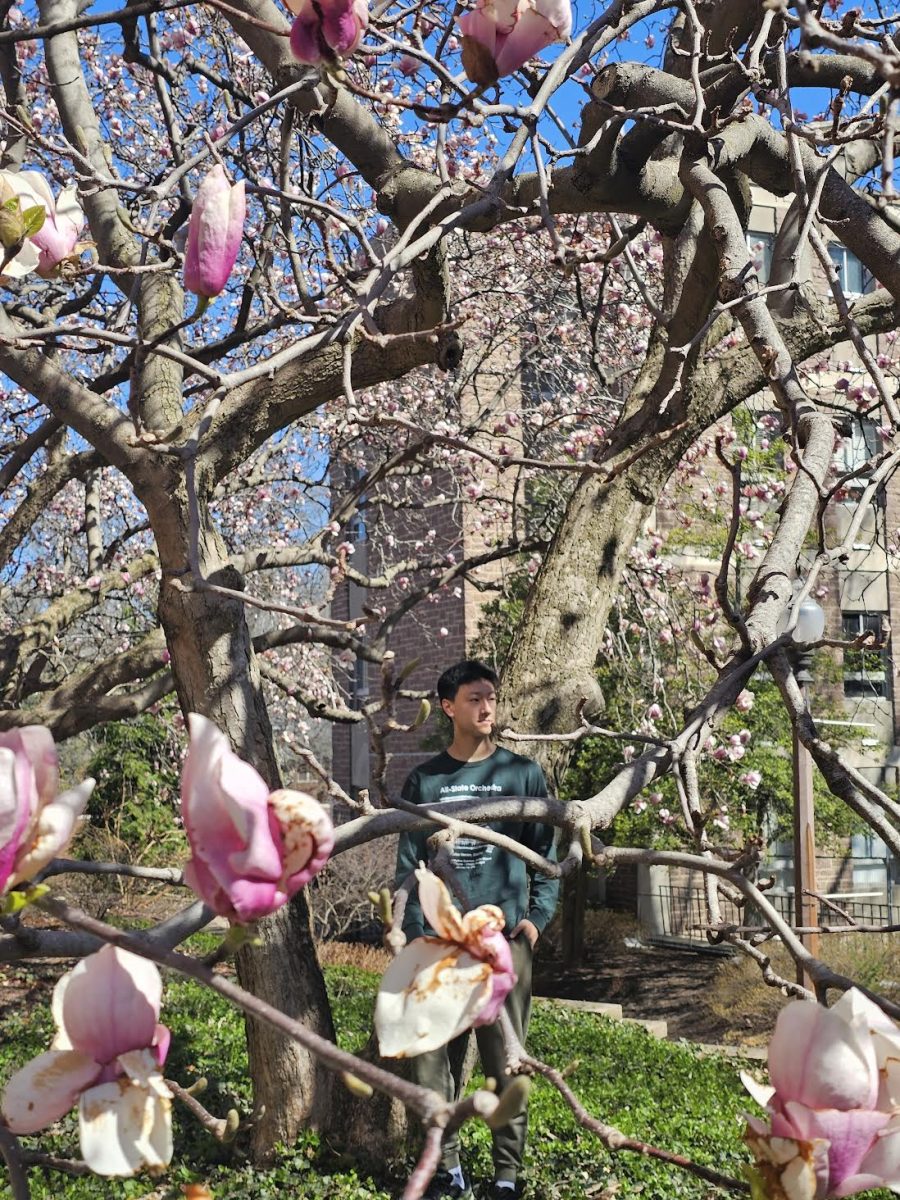Apr. 9 2022 — the National Council of Teachers of English (NCTE) published a position statement titled “Media Education in English Language Arts.” The statement detailed efforts to center skills and students in a new media environment, offering potential outlines to media literacy curriculums for teachers. One sentence was enough to spark a media uproar — “The time has come to decenter book reading and essay writing as the pinnacles of English language arts education.”
This, in hindsight, was not just a spark but an indicator of the times. In the years that followed, professors began reporting that students struggled to adapt to long form texts. Video essays on the loss of attention span overtook Youtube. “BookTok,” literature came to dominate bookstores and library shelves. As social media rapidly accelerates the flow of information and education works to adapt, the role of reading has become a marker of how media has changed.
In Media
In an age of globalization, commercialization and the rapid progress of technology, the internet has an outsized impact on our thinking.
“The world is moving faster and faster,” English teacher Jon Frank said. “We have a hard time keeping up with all the new things that are coming at us,” “Our stamina for critical thinking is changing the more we’re hit with flashes of information. That’s what I think is changing people’s patience, persistence and stamina with a book or any other sustained task.”
It’s not just how people interact with information that’s changing — it’s the flow of information.
“With social media, the average person is consuming more words now than ever before,” science teacher Justin Ragland said. “But it’s all snapshots, almost cheaper things. There’s a fundamental change in our ability to synthesize thoughts and retain key things out of a long form text instead of something that’ll fit into an Instagram reel or a Tiktok. Even if the quantity is higher, I think we’re losing a bit of quality.”
While much of the discourse towards this decline of attention span and fast-paced information intake focuses on young people, the impact of social media stretches further than that.
The rapid flow of information also means that the information retained is often shallow.
“If the only ideas that you’re consuming are little 15 second snapshots, you’re not giving your brain the opportunity to dive deeper and to hold on,” Ragland said. “Long form reading is gonna force you to give up 5 to 10 minutes of your time to just dive in, engage, think about something and cut off external distractions.”
While social media has detriments, it can also create places for writers to flourish where they might not have previously.
“[Social media] gives writers a good platform to post,” Queena Xu (11) said. “For writers, it’s a good thing, because they can show others their work without having to go through other avenues. But it can also lower the standard for writing. For romance, [authors] will write the weirdest things, but people will still read it because [authors] post on TikTok.”
In addition, the flow of information unique to social media means that a wealth of content is available to users.
“Social media is so good at catering what you see to your interests based on what it knows about you,” Anya Calfee (10) said. “It definitely has opened my eyes to certain books that I found interesting that I never would have known about before.”
Through its far and varied dispersion of information, social media has become, in many ways, a double-edged sword in literature.
“We’ve had a lot more exposure to perspectives in literature that weren’t previously represented because folks have been given a way to lift them up in places,” English teacher Jennifer Hartigan said. “You can see that power [being] used for good. It’s brought up some authors to the public conscious that might not have been brought up before. But I think also it goes along with a lot of the groupthink, and the jumping to conclusions, and the bullying mentality, folks deciding that we are done with this book or this author, sometimes without even having read it.”
An Evolving Classroom
As social media spikes its popularity among teenagers, associated effects on attention spans are forging their way into the classroom. In fact, according to a study published by a group at the University of California, the average attention span has shrunk to nearly a thrid of what it was in 2000. These faults in attention are working their way into the classroom where they interrupt students’ relationships with books.
“During the pre and post-COVID transition, there was a huge shift in students’ desire and ability to sit down and read,” Ragland said. “It became a lot more difficult to get the average student to engage and not drift off. Even in the time I’ve been teaching, reading stamina has gone down.”
But it’s not just students’ struggle with prolonged reading that makes teachers concerned: their ability to pick out information is another, more nuanced issue.
“I come in and I’m like, ‘okay, I assigned this chapter for you guys last night. How many of you actually read it?’” Ogolin said. “And it’s maybe half the kids, but whether or not they retain that information is a whole different beast.”
A potential solution, as outlined by the NCTE, is pulling out excerpts from books, thereby decreasing the amount of reading students must do during a literacy exercise.
“I think it can alleviate some of that heavy pressure that students feel to complete a whole book, if, in fact, all I want them to do is learn how to summarize,” Ogolin said. “They could read a chapter and still learn the skill. [So] the idea that students are reporting that they don’t read whole books is actually less of a negative indicator than someone might think.”
Some students appreciate this technique, as it allows them to conserve their focus for developing literacy skills as opposed to digesting a book.
“In terms of class, I think that short stories are an easier way to learn about a topic or get an overarching idea about something,” Calfee said. “It’s not so much of an overwhelming thing to undergo, because it’s not a thick book with a bunch of pages.”
These alternative forms of media are working their way into English curriculums. For example, teachers have used online news and podcasts for reading or media assignments and AI feedback for written essays.
“I think that in the world our students are already in, and will be entering, they need to be literate in a variety of different media,” Frank said.
While they’re increasingly replacing books in the classroom, these forms of media may not mark the ultimate roadblock. In fact, they could aid in promoting books in the fast-paced future.
“When people see a short video, documentary, infographic, political cartoon or listen to a podcast that’s connected to a book we’re reading in class, I think that that’s powerful,” Frank said. “It helps us sell the continuing value of books in our society, [and show] that these ideas are fresh and contemporary and can still ask us important questions today, and in the future.”
However, this shift to shorter media forms doesn’t come without caution. Teachers acknowledge that books have the power to play an important role in students’ development.
“The metaphor we use with books is, some books are windows and some are mirrors,” Hatigan said. “Some allow us to better understand ourselves, and some open new avenues, new worlds.”
Looking Forward:
While much of the discourse surrounding modern literature and reading is pessimistic, many believe the arc of literature hasn’t been, and will not necessarily be, one of degradation.
In addition, literature as an art form offers a degree of connection unique to itself.
“Books are a more intimate form of communication than other forms of media,” Frank said. “It’s the voice in the book, it’s the reader and it’s the author doing whatever they can to communicate effectively with that one person.”
Even as the role of books in media and the classroom changes, those who read describe their love for it as enduring.
“There’s studies that show Kindles and e-readers becoming more obsolete because people are desperate to come back into a reading space,” Ogolin said. “We’re recognizing that screen time is not good for our eyes, our brains, our hearts and our souls. Reading is always going to be an activity that humans engage in, and I hope there will always be people like me that want to have books in our hands.”




![A client poses for a photo. Although Hannah Hiken (12) enjoys painting nails for others, she prefers to have control of her own artistic freedom. “I do [nails] on myself a lot. I think that's what I really enjoy most,” Hiken said. “Doing it on myself, because I can choose everything I want to do.”
Photo courtesy of Hannah Hiken](https://laduepublications.com/wp-content/uploads/2025/05/IMG_1740-1200x986.jpeg)
![Duckham spends large amounts of her free time reading. Dealing with fewer classes this year, Duckham’s bookshelf at home has seen more use. “I call every book my favorite, but not truly every book [is]. I wrote my dissertation on Herman Melville, so I guess I'd have to say Moby Dick, is definitely one of my all time favorites,” Duckham said. “I really do love both British and American novelists of the 19th century. I tend to prefer nonfiction over fiction. For some reason, I think there's so many great non fiction writers, and I love the whole idea of something being true.
(Photo Courtesy of Janet Duckham)](https://laduepublications.com/wp-content/uploads/2025/05/IMG_6605-1200x900.jpeg)


![ABOVE: Duncan Kitchen (10) plucks the strings of his guitar at his home. Duncan’s older brother inspired him to start playing the guitar two years ago. “On any given day [in Alaska], you could walk up the mountain start a campfire [and] play guitar,” Duncan said. (Photos by Vincent Hsiao)](https://laduepublications.com/wp-content/uploads/2025/04/Hsiao_20250325_DuncanKitchen_010-1200x839.jpg)




